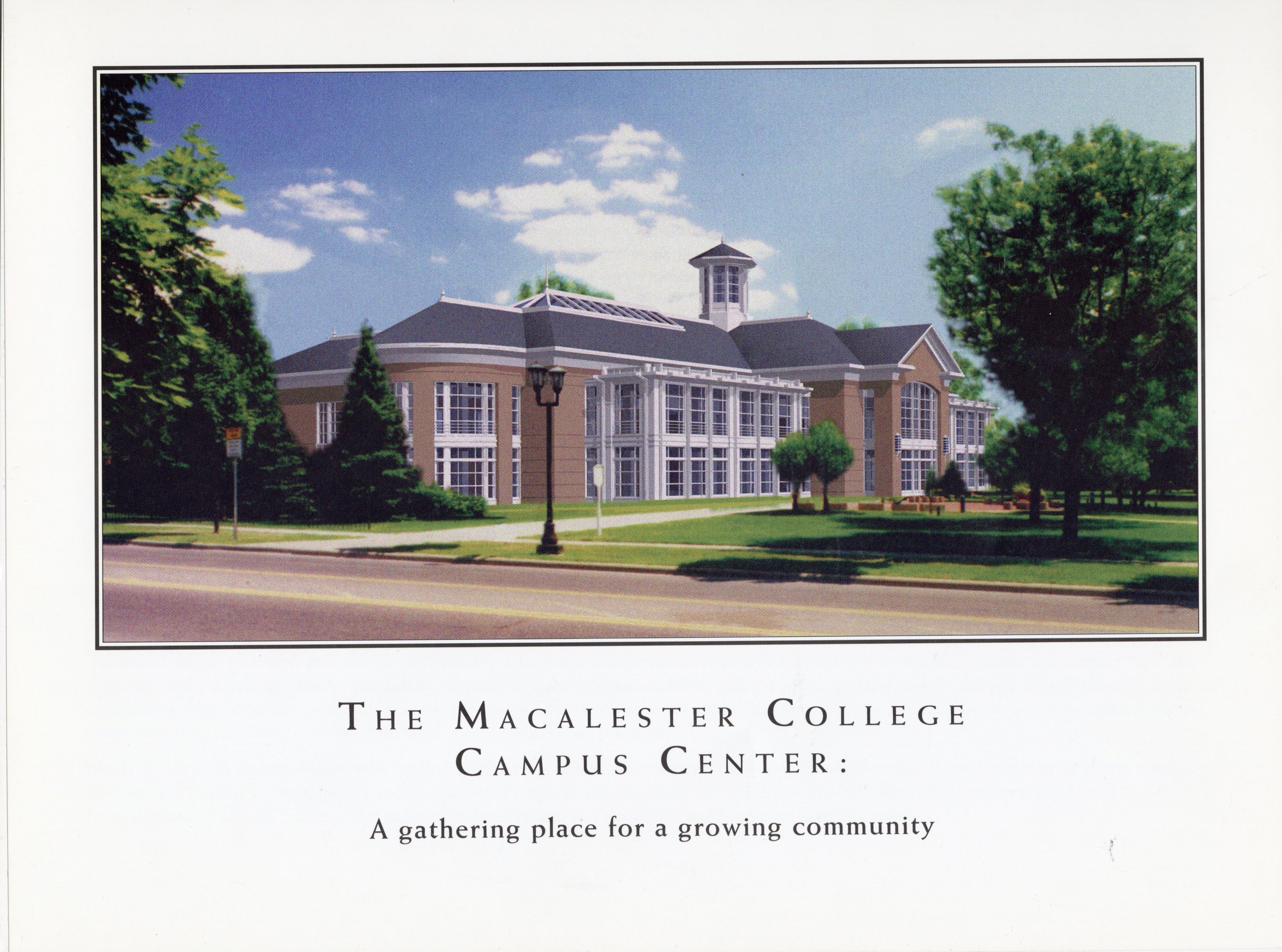From Student Union to Campus Center

By the 1990s, the Student Union had been in place for nearly a half century, and by the fall of 1993, the college was considering new plans for a campus center.1 The new building would serve as a new central gathering place and dining hall for students, giving Kagin Commons the chance to serve another purpose.
These renovations represented a change in the college’s approach to community. When the original Student Union and Kagin were constructed in the 1950s and 60s, the social atmosphere was quite different. Dorms were still segregated by gender, students weren’t required to live on campus, and campus socializing had a more formal quality— students were required to dress up for dinner on a weekly basis.2 By the 1990s, all of this had changed. The college established its residency requirement in the fall of 1995, solidifying Macalester’s commitment to the belief that living on campus could have academic and social benefits for students. Much of the formality and gendered divisions between students had dissolved, and the campus was ready for a new campus center that reflected these changes.